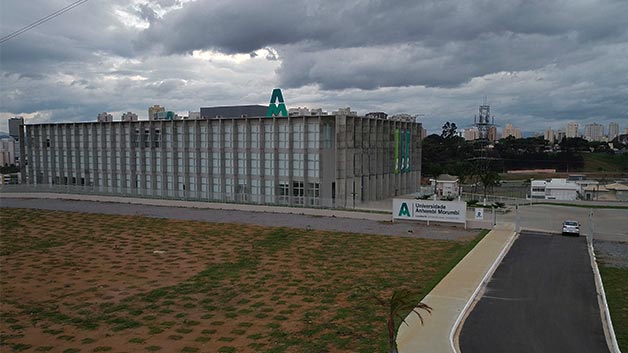

ANHEMBI MORUMBI UNIVERSIDADE FREE
These choices allow wide free spans and a significant modularity of space based on a rigid 1.50 x 1.50 meter grid. In Piracicaba instead a system of alveolar slabs was employed, exploring the best possibilities of precast concrete. All educational spaces are situated alongside the longitudinal glazed façades to take advantage of the natural light and have been oriented towards the large-scale central void, to embody the buildings’ core social identity and its essence as a place for encounters, human connection and knowledge exchange.įollowing a careful analysis of the structural opportunities, a system of ribbed slabs made possible by in-situ molded concrete was adopted in the São José dos Campos building.

The shared program features classrooms, diverse laboratories for practice exercises and simulation, a space for the cafeteria, physiotherapy facilities, a library and offices. The natural ventilation and light are optimized via a ceiling pergola in concrete and smaller wooden elements acting as sun blades. The wide use of glass in the façades enhances transparency and reveals a deep connection with the architecture of the cities. Moreover, a caramel resin floor comfortably reflects the abundant natural light in the social core and passageways of the buildings. Miralles Tagliabue EMBT wins the competition for the Shenzhen Conservatory of Music, one of the city's 10 new era cultural buildings In the case of São José dos Campos, this was molded in-situ, relying on the expertise of the local workforce, while in Piracicaba, it was prefabricated to enhance sharpness and exactitude in the attachment system. Choosing a regular structural system enabled KAAN Architecten to feature glass in between the thin concrete slabs and the roof beams. The intense Brazilian solar radiation is mitigated by a fully encompassing system of vertical slabs that fulfills the need for shade in every façade. The buildings have different volumetric proportions. São José dos Campos encompasses a more compact structure and consists of three floors with a total area of 5.300 sqm, while Piracicaba, is horizontally developed and lies on the slope of the surrounding landscape, directly dialoguing with it. Located in proximity to a main road junction, the future campus in São José dos Campos stands like a modern day Acropolis on an elevated plot, which creates isolation and the ideal conditions to turn it into a new reference point amid the dense urban fabric. In Piracicaba, the new building occupies a plot along a secondary urban expansion axis in the southern part of the city.īy optimizing the topographical characteristics of their areas and thanks to the balanced façade geometries, both projects are landmarks that firmly and visually open themselves to the city, giving the University a recognizable position within the architectural panorama.

Both buildings have been driven by the same design choices: to create an elegant yet strong architectural identity for the campuses of the Universidade Anhembi Morumbithrough a non-scale approach to the representative façades, providing the students and the institution with a generous central common space that promotes social interaction and responds to the hot Brazilian climate of these regions by allowing greater circulation of natural air.


 0 kommentar(er)
0 kommentar(er)
